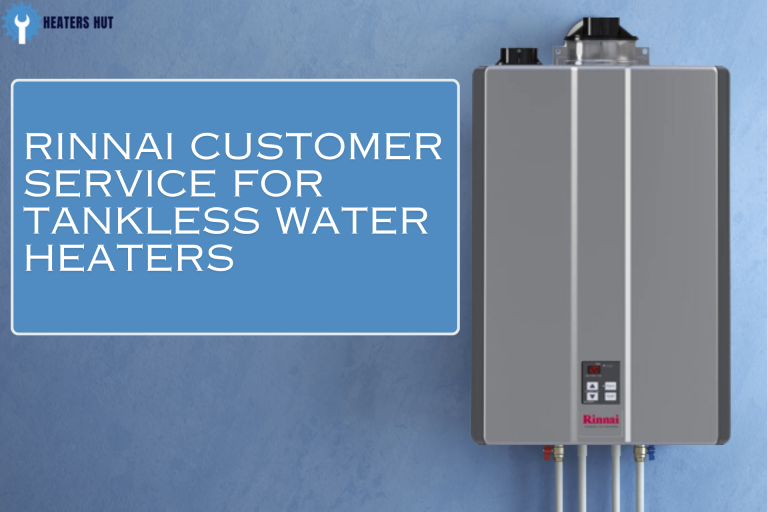Discovering a pool of water around your water heater can be distressing for homeowners. It’s essential to promptly address water heater leaks to prevent further damage and costly repairs.
This comprehensive guide will delve into the common reasons behind water heater leaks, provide step-by-step instructions for identifying and addressing leaks, and offer valuable tips for preventing future leaks through proper maintenance.
Understanding Water Heater Leaks
Water heaters can sometimes exhibit leakage, which may be mistaken for condensation. It’s crucial to differentiate between harmless condensation and actual water heater leakage. The distinction is especially significant when dealing with gas and electric water heaters, as their condensation triggers and identification methods can differ.
Additionally, assessing external factors like HVAC systems and water supply lines can help pinpoint potential sources of water leakage.
1. Immediate Steps for Leak Management
In the event of a water heater leak, swift action is necessary. Prioritize safety by shutting off the power supply to gas and electric water heaters. Identify and locate gas and power shut-off valves, the main water supply, and the cold water inlet valve. Halting the water supply can help mitigate further damage while you assess the situation.
2. Identifying Leak Sources and Solutions
Water heater leaks can stem from various causes, such as pressure relief valve issues, corroded tanks, and loose fittings. Depending on the leak’s location, different solutions are applicable. For instance, addressing leaks from hot and cold water inlet pipes involves tightening connections.
Leaks from the temperature and pressure relief valve might require adjusting temperature settings or replacing the faulty valve. Solutions for bottom leaks near the drain valve include tightening or replacement. In the case of unexplained leaks, involving a professional for an assessment is recommended.
3. Preventing Future Water Heater Leaks
Regular maintenance is crucial in preventing water heater leaks. Flushing the water heater annually helps prevent sediment buildup, which can lead to leaks. Homeowners should also stay vigilant for signs of leakage or damage and promptly seek professional assistance.
Recognizing the signs that indicate the need for repair or replacement is crucial for preventing future leaks.
The Mechanics of a Water Heater
Understanding the inner workings of a water heater is essential for effectively troubleshooting leaks and other potential issues. A water heater operates through a series of carefully designed processes to provide the hot water we rely on for various domestic purposes. Let’s delve into the mechanics of a water heater to gain a clearer perspective:
1. Cold Water Intake
The process begins with cold water entering the water heater through an inlet pipe. The main water line of your home typically supplies this water. The cold water enters the tank and is directed towards the bottom.
2. Heating Elements
You’ll find one or more heating elements inside the water heater tank. Electric water heaters electrically power these elements, while gas water heaters utilize a burner to heat the water. The heating elements raise the water temperature within the tank, gradually heating it to the desired temperature.
3. Thermostat Control
Water heaters are equipped with thermostats to maintain a consistent temperature. These devices monitor the water temperature inside the tank and signal the heating elements or burner to activate or deactivate accordingly. Thermostats ensure the water is heated to the desired level and prevent overheating.
4. Hot Water Distribution
Once the water reaches the desired temperature, it rises to the top of the tank, ready for distribution. When you turn on a hot water faucet in your home, the hot water is drawn from the top of the tank and directed through the plumbing system to the desired location.
5. Cold Water Replacement
As hot water is drawn from the top of the tank, cold water simultaneously enters the tank at the bottom. This continuous cycle ensures a steady supply of hot water as needed. The heating elements or burner activate periodically to maintain the desired water temperature.
6. Pressure Relief Valve
Water heaters have a pressure relief valve to prevent excessive pressure buildup within the tank. If the pressure within the tank becomes too high, the valve releases some of the water and pressure, ensuring safe operation.
7. Sediment Buildup
Over time, minerals and sediment from the incoming water can settle at the bottom of the tank. This sediment buildup can reduce heating efficiency and potentially contribute to leaks. Regular maintenance, such as flushing the tank, helps prevent sediment-related issues.
Understanding these fundamental components and processes helps homeowners grasp how a water heater functions. When troubleshooting leaks or other problems, this knowledge allows for a more informed approach to identifying potential causes and solutions.
By being familiar with the mechanics of a water heater, you can work more effectively to maintain its optimal performance and address issues promptly.
Read this here also: Fix Low Water Pressure in Water Heaters
Analyzing Leak Causes for Informed Solutions
A detailed exploration of common factors leading to water heater leaks, including old tanks, pressure issues, and faulty valves. Internal tank leaks, often unnoticed, can also be a significant source of problems.
Where Leaks Originate and Their Implications
Explaining how leak locations provide insights into their causes, ranging from condensation to internal tank issues. Rapid identification and response are emphasized to minimize water damage and potential dangers.
1. Preventative Measures for Leak Avoidance
Preventing water heater leaks requires a proactive approach involving regular maintenance and monitoring. By implementing the following preventative measures, homeowners can significantly reduce the risk of leaks and ensure the long-lasting performance of their water heaters:
2. Tightening Loose Components
Water heaters consist of various fittings, connections, and valves that can gradually loosen over time due to temperature fluctuations and usage.
Regularly inspect and tighten loose components, such as inlet and outlet pipes, pressure relief valves, and drain valves. Ensure proper seals and connections to prevent water from escaping.
3. Professional Maintenance
Enrolling the experienced plumbers’ professional maintenance plan is a wise investment. Regular maintenance visits include thorough checks, cleaning, and adjustments that can detect potential issues before they escalate into leaks.
Plumbers can also identify and address any underlying problems that might lead to leaks, such as corroded parts or faulty valves.
4. Proper Tank Cleaning
Sediment buildup is a common cause of water heater leaks. Over time, minerals and debris can accumulate at the bottom of the tank, leading to corrosion and weakening of the tank material.
Regularly draining and flushing the tank can help remove sediment and prolong the life of your water heater. To ensure proper cleaning, always follow the guidelines provided by the manufacturer.
5. Timely Response
To avoid further damage, it is important to address any signs of leaks promptly. Even small leaks can worsen, leading to more extensive repairs or replacements. Ignoring leaks can also contribute to water damage, mold growth, and increased utility bills.
As soon as you notice any dampness or water around the water heater, take immediate action to identify and rectify the issue.
6. Regular Inspection
Conduct visual inspections of your water heater on a routine basis. Look for any signs of corrosion, rust, or moisture around connections and valves. Check for any unusual noises, fluctuations in water temperature, or changes in water pressure, as these can indicate potential problems. Early detection and intervention can save you from costly repairs down the road.
To prevent water heater leaks and ensure safe operation, follow these tips. Get professional help if needed to maintain a leak-free system.
Insights from Plumbing Experts
Professional plumbers play a vital role in diagnosing and addressing water heater leaks. Expert maintenance plans can extend the lifespan of a water heater and prevent leaks. For reliable assistance, homeowners can turn to plumbing experts like Heaters Hut for water heater repairs and replacements.
Conclusion
Water heater leaks can have severe consequences if neglected. Homeowners can effectively manage and prevent leaks by understanding the causes, identifying sources, and implementing preventive measures. This ensures optimal water heater performance, providing a safe and secure home environment.
Professional assistance is readily available to address water heater issues promptly and effectively, ensuring peace of mind for homeowners.






